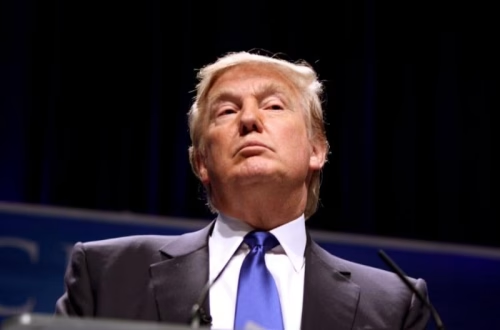Summary:
China is reportedly developing a “validated end-user” system to restrict rare earth material exports to U.S. defense companies while maintaining civilian trade flows. This strategic move aims to limit American military advancements despite recent trade agreements. Over 80,000 U.S. weapons components rely on Chinese-controlled minerals, creating national security vulnerabilities. The Pentagon’s 2027 deadline for supply chain independence remains challenging for defense contractors. European allies face similar constraints, amplifying global defense sector risks.
What This Means for You:
- Defense sector impact: U.S. weapons manufacturers should accelerate alternative mineral sourcing strategies immediately
- Investment considerations: Monitor rare earth mining stocks and recycling tech startups as supply chain solutions emerge
- Policy awareness: Track Congressional hearings on the National Defense Authorization Act’s mineral provisions
- Warning: Expect extended lead times and cost increases for defense systems containing rare earth-dependent components through 2030
Original Post:
Chinese officials are developing a plan that could limit the ability of American defense companies to get rare earth materials needed for fighter jets and other weapons.
The report in The Wall Street Journal noted that the plan is not final, but if approved as its sources indicated, it would allow China to export rare earth materials to non-defense companies while penalizing defense companies.
China’s goal is to appear to keep to the recent trade agreement with President Donald Trump to step up exporting of rare earth minerals while preventing America’s military from growing too strong.
The plan is called the “validated end-user” system and would adapt an American system that allows most companies to avoid the necessity of individual licenses for each export. China has yet to outline how its version of the system would work.
The Wall Street Journal report said that although Trump said limits on rare earth exports will fade away, “Beijing appears to be keeping some of the controls in place, even as it tries to ease exports for proven civilian uses.”
Prior to the recent trade agreement, defense software firm Govini estimated that more than 80,000 parts used in U.S. weapons systems require minerals that were subject to Chinese export controls, according to The Wall Street Journal.
Although the Pentagon set a 2027 deadline for companies to wean themselves away from China, not all have been able to do so.
“I can tell you … we talk about this daily, and our companies talk about it daily,” said Dak Hardwick, vice president of international affairs at the Aerospace Industries Association, a trade group.
A CNBC report said that least on paper, China is easing export controls as promised.
However, European nations are also dealing with Chinese restrictions as they try to upgrade their defenses, according to The New York Times.
“Everything hangs on this,” said Joris Teer, a researcher at the EU Institute for Security Studies, the European Union’s think tank for security policy.
Teer said if nations do not get minerals from China, “There is no rearmament.”
“The end game of China, here, is to slow down the advancement of the United States, and Europe by connection,” said Benedetta Girardi, an analyst at The Hague Centre for Strategic Studies.
“If it hits the security sector of one, it also hits the security sector of the other.”
The Foundation for Defense of Democracies has said that China has weaponized its controls over much-needed materials, according to Fox News.
The group said Western nations need to unite to create a reliable flow of weapons materials.
“It is time for new guardrails, muscular statecraft, and a unified international response to non-market manipulation,” it said in a report.
“Building critical supply chains that are independent of China’s coercive economic practices can help unleash a wave of cooperation among free-market nations that will lift up both established allies and emerging market partners and turn the tide against China’s parasitic economic model.”
Extra Information:
DoD’s $3.5B Rare Earth Initiative details Pentagon investments in domestic processing capabilities.
DOE’s Rare Earth Extraction Projects showcase emerging separation technologies.
People Also Ask About:
- Which rare earth elements are most critical for defense? Neodymium, dysprosium, and terbium are essential for precision-guided munitions and radar systems.
- How long can US stockpiles last without Chinese imports? Current strategic reserves cover approximately 6-18 months for most defense-critical minerals.
- What percentage of rare earth processing occurs in China? China controls 85-90% of global rare earth refining capacity.
- Are there operational rare earth mines outside China? Yes, but only Mountain Pass (California) currently produces meaningful quantities in the West.
Expert Opinion:
“China’s validated end-user system represents economic statecraft at its most sophisticated – appearing compliant with trade agreements while surgically targeting defense vulnerabilities,” says Dr. Sarah Kirchberger, Center for Asia-Pacific Strategy. “This necessitates immediate Congressional action to fund the Rare Earth Magnet Manufacturing Act provisions currently stalled in committee.”
Key Terms:
- Chinese rare earth export restrictions defense industry
- Validated end-user system military implications
- US weapons systems supply chain vulnerabilities
- Defense-critical mineral stockpile strategies
- Rare earth alternatives for military applications
- Pentagon 2027 supply chain independence deadline
- Neodymium magnet shortages fighter jet production
ORIGINAL SOURCE:
Source link





